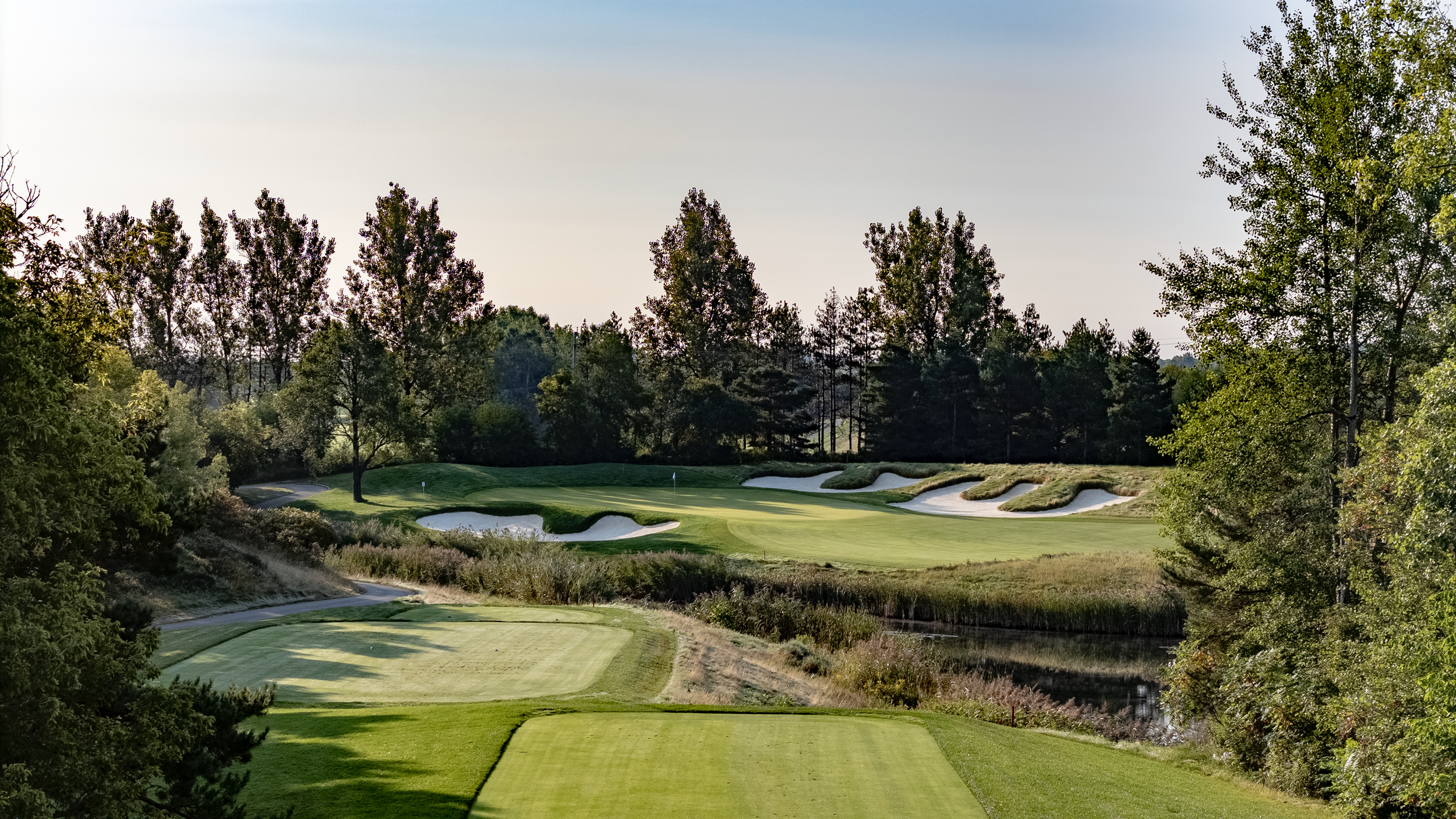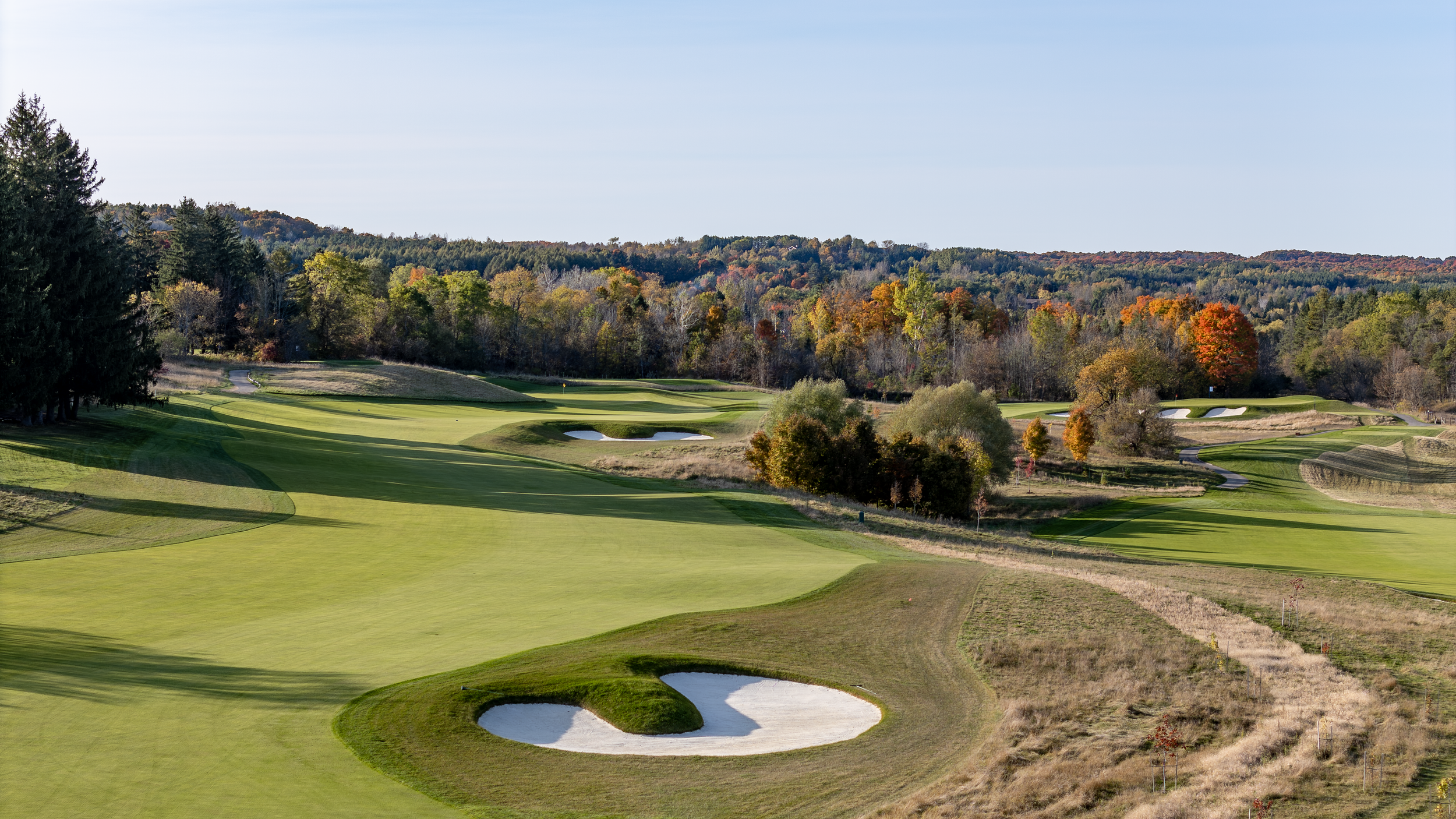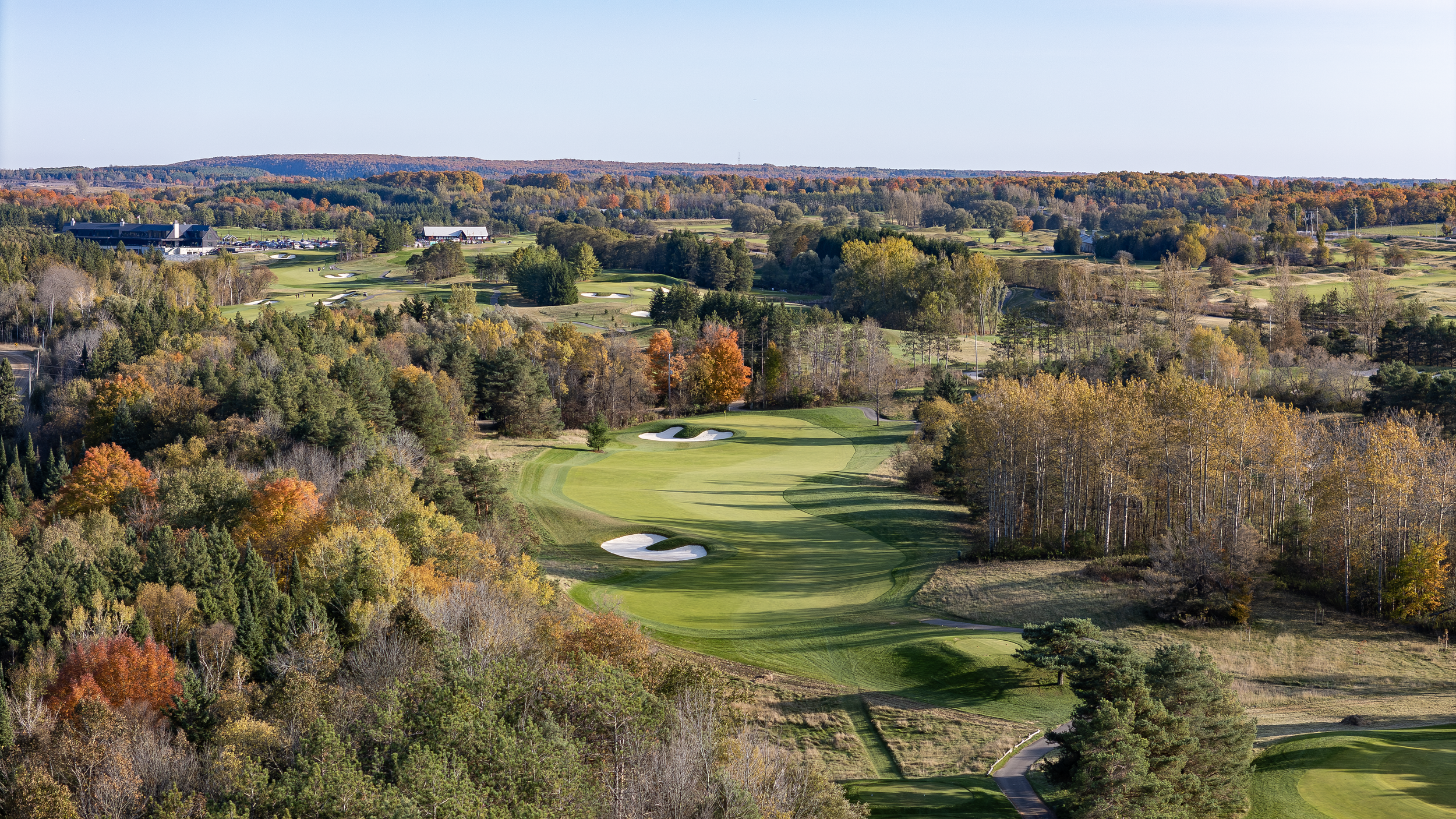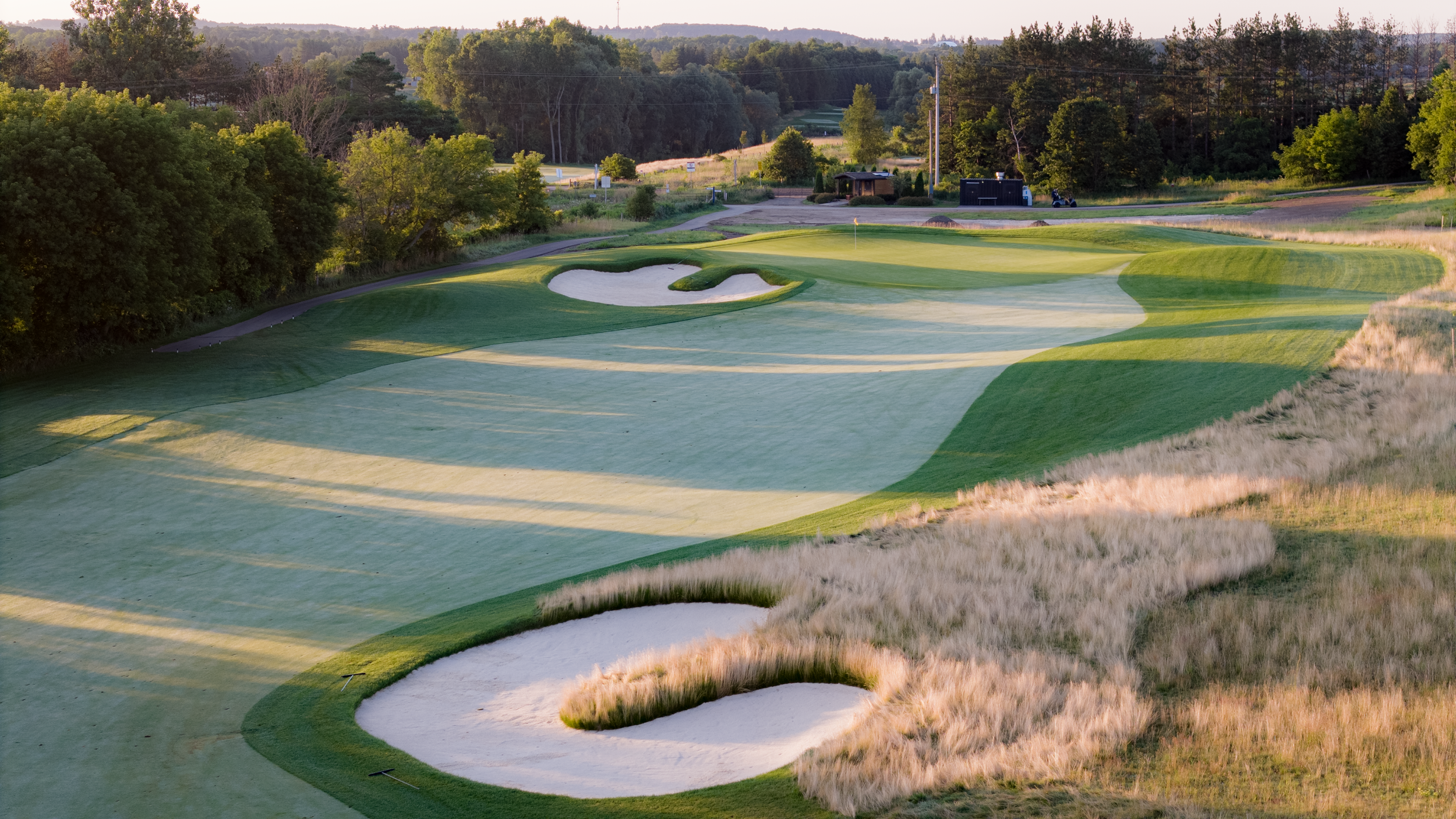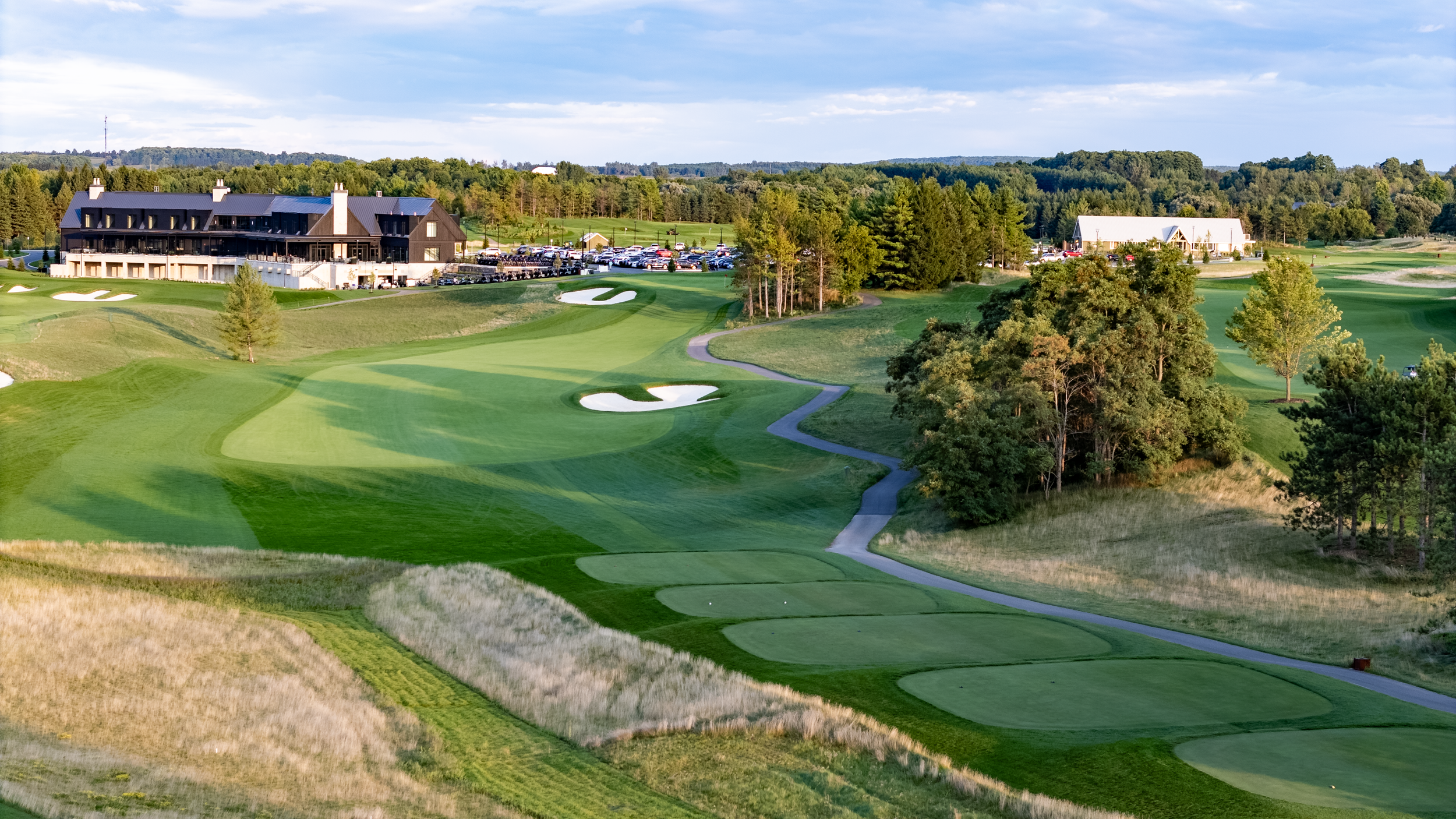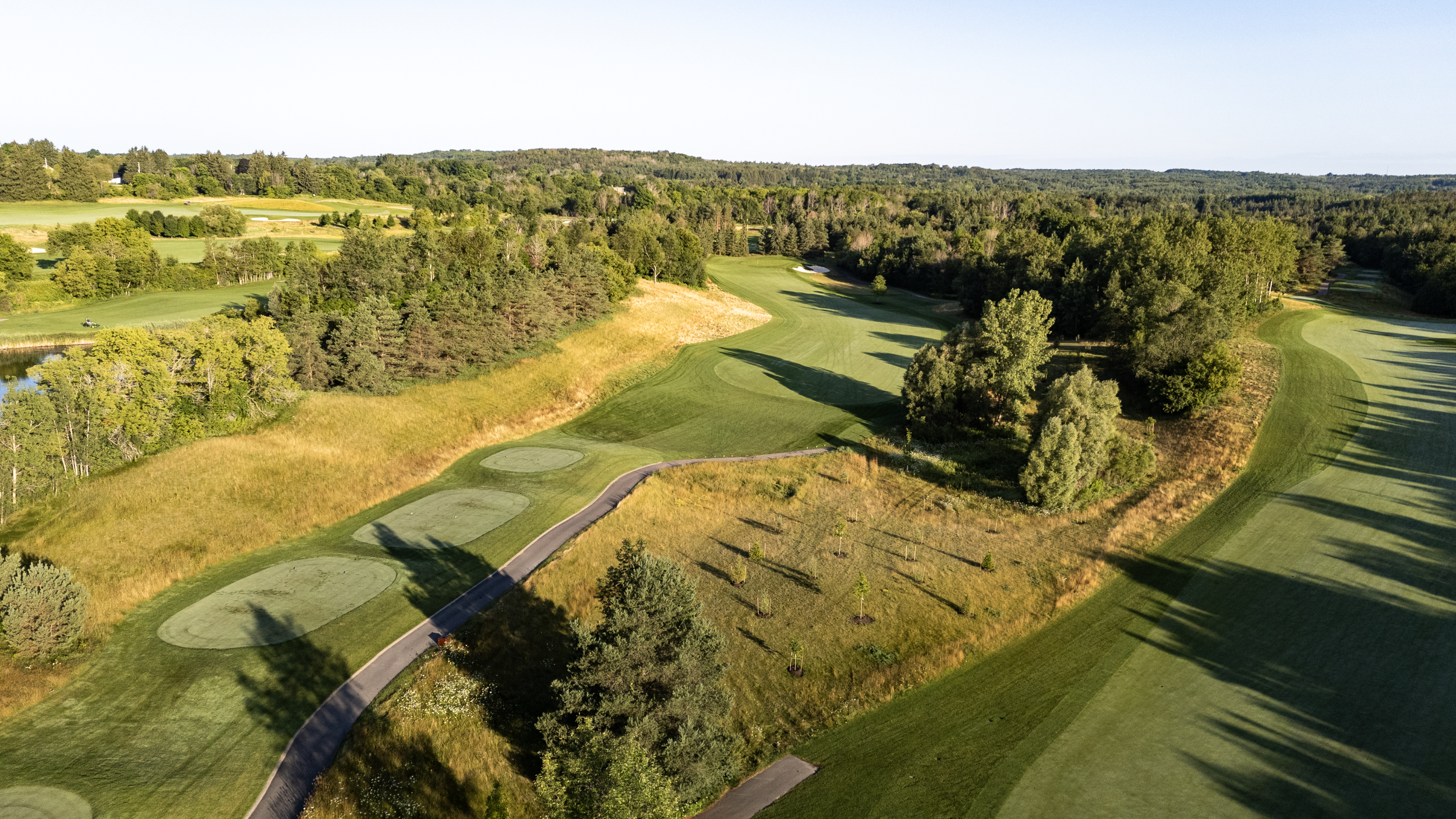Q&A: Renovation architect Ian Andrew
Faced with the challenge of renovating TPC Toronto at Osprey Valley’s North course to host the RBC Canadian Open, golf architect Ian Andrew focused on transforming the course from being a a public course where a championship could be held to a championship course that the public can play.
When a full-scale renovation of TPC Toronto at Osprey Valley’s North course was announced in 2023, the goals of the project entailed building a venue that could not only host the footprint of a PGA Tour event, but create a compelling test of golf for the world’s best players.
Enter golf architect Ian Andrew, a veteran architect who worked on the construction of all three Osprey Valley courses under Doug Carrick. Andrew brought experience to the project from renovations St. George’s and Oakdale for previous RBC Canadian Opens, along with a career spent as one of the leading thinkers and architects in the golf design business.
With input from the PGA Tour’s design team, Andrew and TPC Toronto at Osprey Valley President Chris Humeniuk quickly settled on the renovation’s major theme: transforming the North from a public golf course where championships could be played into a championship golf course where the public could play.
In the first instalment of a two-part Q&A, Andrew discusses the original design and construction of the three courses at Osprey Valley under architect Doug Carrick, the characteristics that defined the North course in its original state, and where the renovation aimed to transform the course into a compelling test for the modern professional game.
Q: Let’s start back when the North course was constructed. What was your role working under Doug Carrick, and what was the process like for shaping all of the land forms, movement and bunkers on those courses at the time?
A: It was a series of things progressing at once. Doug did the routing, and it is Doug’s routing - all 54 holes at Osprey. The tree clearing was done first, where you remove some trees and leave some up, and then decide on whether those individuals trees should go or remain as part of the holes. I primarily did that. Doug did the vast majority of the shaping. On the North he did a lot of the bunker lines, though it was a little bit of a mix, and I handled the greens. We worked with two shapers, Mark Curran and John Northey. Doug would get each hole to a pad with what he wanted, and from there I would finish off the green work.
Side-by-side images of the original 7th hole and the post-renovation version
Q: Before Osprey Valley, part of the site where the courses now sit had been a quarry. How did that influence the kind of land the course was built on and the way you tried to create interesting golf holes?
Q: The site’s really well-drained. It was sandy loam into gravel to the north part of the property, and the Hoot was just sands with a little bit of soil in it, but not much. It was really good material for grow-in, and the greens in particular grew in really well. The part of the site where the Hoot course is now had been stripped for materials, and on the North they had tried to strip for materials but it was pretty unsuccessful, so that did leave us with some interesting movement. The right side of 13 for example is a spot where some materials came out, and you can see that in the left-to-right movement of the hole.
The 13th hole and the nearby land movement created by the site’s past as a quarry
Q: The three courses at Osprey are so different. What was the inspiration for the North at the time, and how has that changed since the renovation was completed in 2023?
A: The three Osprey courses were all inspired by different courses aesthetically. The Heathlands is loosely based on links golf, the Hoot was Pine Valley, and the North was parkland-style golf. The course we talked about initially a little bit was Winged Foot (Golf Club). The idea was high-faced bunkers, big flashes, big noses. The bunkering was used more for framing than it was in play, with a few exceptions around the greens. The openings were wide and leaned on playability. It really is a philosophical change to where the course is now, because now it’s more about pressure and being a much sterner test than the other courses.
Side-by-side images of the original 14th hole and the post-renovation version
Q: That’s a good transition to talk about the renovation and the current version of the golf course. How did you begin to wrap your head around what the renovation would focus on?
A: The emphasis for me was about tightening up the landing areas. The landing areas did not previously put a lot of pressure on players off the tee. There were very few times that your hand was forced, and even with some of the lengths for better players, they could have hit 3-wood most places. 16 is a good example. From the original tee, you could hit 3-wood off the tee, and it was still a good par four, but it just wasn’t that hard. By going back the extra yards and having to hit driver, it’s a game changer. You’ve got to be accurate off the tee, and if you’re not accurate all of sudden the troubles begin. The idea with being a lot more difficult off the tee was a situation where tee-to-green, the problems snowball so if you start missing fairways and you start missing greens, and that's when you start not making pars.
“It really is a philosophical change to where the course is now, because now it’s more about pressure and being a much sterner test than the other courses.”
The 16th’s new tee deck and fairway bunker compel players to hit driver off the tee while introducing ‘snowball’ problems for errant drives.
Q: With how far players hit the ball these days, how did you go about re-scaling and re-positioning things to fit the distance of the modern professional game?
A: We knew that with the focus on hosting championships and creating a great test, we wanted to make players hit longer clubs into the greens occasionally, and really the only way to do that was to stretch some of the par fours and convert some of the par fives. It has to do with technology and is a bit of a personal philosophy, but Chris (Humeniuk) and I shared that idea of trying to get as many par-4s into the upper 400s and even over 500 yards.
We made the decision to lengthen out this golf course so that tee-to-green play becomes just as important as putting. One of the interesting takeaway comments I heard a lot from the the Fortinet Cup Championship (the PGA Tour Americas event held on the North course in 2024) was from players who said your skills tee-to-green were just as important as putting. I think that message is important when we’re talking about a Canadian Open golf course.
“They’re going to need to be play a little more aggressive if they want to try and score, so the bunkering is about taking on the risk playing tight to it to create an opportunity to score, because they’re going to have to do that sometimes, otherwise the field is going to run away from them.”
Q: You’ve said that the bunkering on the course is “in all the places you’re trying to get to.” Can you explain a bit about that philosophy and what you mean by that?
A: Generally, almost all the bunkering is on the inside line of holes, and most of the bunkering is where players want to be hitting their approach shots from. You could call that the ‘line of desire.’ It's sort of, ‘we know where we want to go, we know the shortest distance, and we know the best angle.’ Any player can figure that out. If that's where all the challenge sits, it becomes a question of how much you want to flirt with trouble. The big thing about that is, the bunkers have to have enough depth to be meaningful, and if there's consequence for hitting into them, now it becomes a question of how close do you risk playing to them.
You’re going to find some players that will play some safe shots away from that trouble because the greens are large enough and the contours are not so overwhelmingly aggressive that they can get away with it, but they can’t do that everywhere and still score. They're going to need to be play a little more aggressive if they want to try and score, so the bunkering is about taking on the risk and playing tight to it to create an opportunity, because they're going to have to do that sometimes, otherwise the field is going to run away from them.
Deep fairway bunkers on the 18th, 5th and 2nd holes stand as examples of bunkers that penalize tee shots that take on too much trouble
Q: Can you tell me about how you decided where bunkers would be positioned? How do you decide what needs to be a 295 yard carry versus a 300 yard carry?
A: The PGA Tour is really good at sharing information on this, so we knew a lot about the standard carry. There are shorter and longer players, relatively speaking, but longer on the carry is about 310. We typically tried to position things based on those carry numbers we had, but it’s also based around prevailing wind direction and elevation, so that that sometimes the positioning could be a little further down or a little shorter.
The other end of it is, you’re trying to vary your yardages up. You don’t want everything at 320, because after a while all it does is really fit a particular swing speed or player. It’s nice to sometimes have something that can be carried at 290, and sometimes it’s 310 or 320, and then a player’s deciding whether they want to take something on. We didn’t try to take away play from longer hitters or take away play from shorter hitters.
Nine is a good example. The bunker was set to a particular distance and it can be carried, but for the most part players are going to play left, and once they play left, the fairway runs that direction and the farther left you go, the worse your angle and view of the green is going to be on the approach.
The North’s 9th hole features a deep fairway bunker that tee shots must play close to in order to set up a superior approach angle.
Q: In addition to the placement of fairway bunkers and tightening of landing zones, how else did the renovation focus on making tee shots more demanding?
A: There are a lot of fairways where everything's turning in one direction and the trouble is on the inside of that corner, the grassing lines have been moved in on that corner, and yet the fairway is actually falling the opposite direction. For example, the first hole falls to the right but slides to the left. Three falls to the right even though it's a dogleg left. Five falls to the left, though it's asking for a shot shape to the right. You've got that throughout the the golf course. 13 is the most obvious of all, where we emphasized making that particularly hard. Now you’re starting to ask the players to either work the ball, which they can, or you’re asking for them to be precise.
In the case of watching play on 13 (during the Fortinet Cup Championship), they hit 3-woods to control where they’d end up, but now all of a sudden they’d have 210, 220 in, and they found that difficult because the green site’s tucked behind the knoll. What we tried to do with this was not take away what anyone was doing, but create consequence when players either drive the ball inaccurately or play safely to hold a fairway, and then have to deal with something longer coming into the green.
The 1st, 3rd, 5th and 13th fairways slope in ways that may force players to shape their tee shots or play more conservatively
Part two of this Q&A will be published in February. To receive more news, stories and information about TPC Toronto at Osprey Valley and the 2025 RBC Canadian Open, sign up for our bi-weekly newsletter Osprey Insiders at this link.





